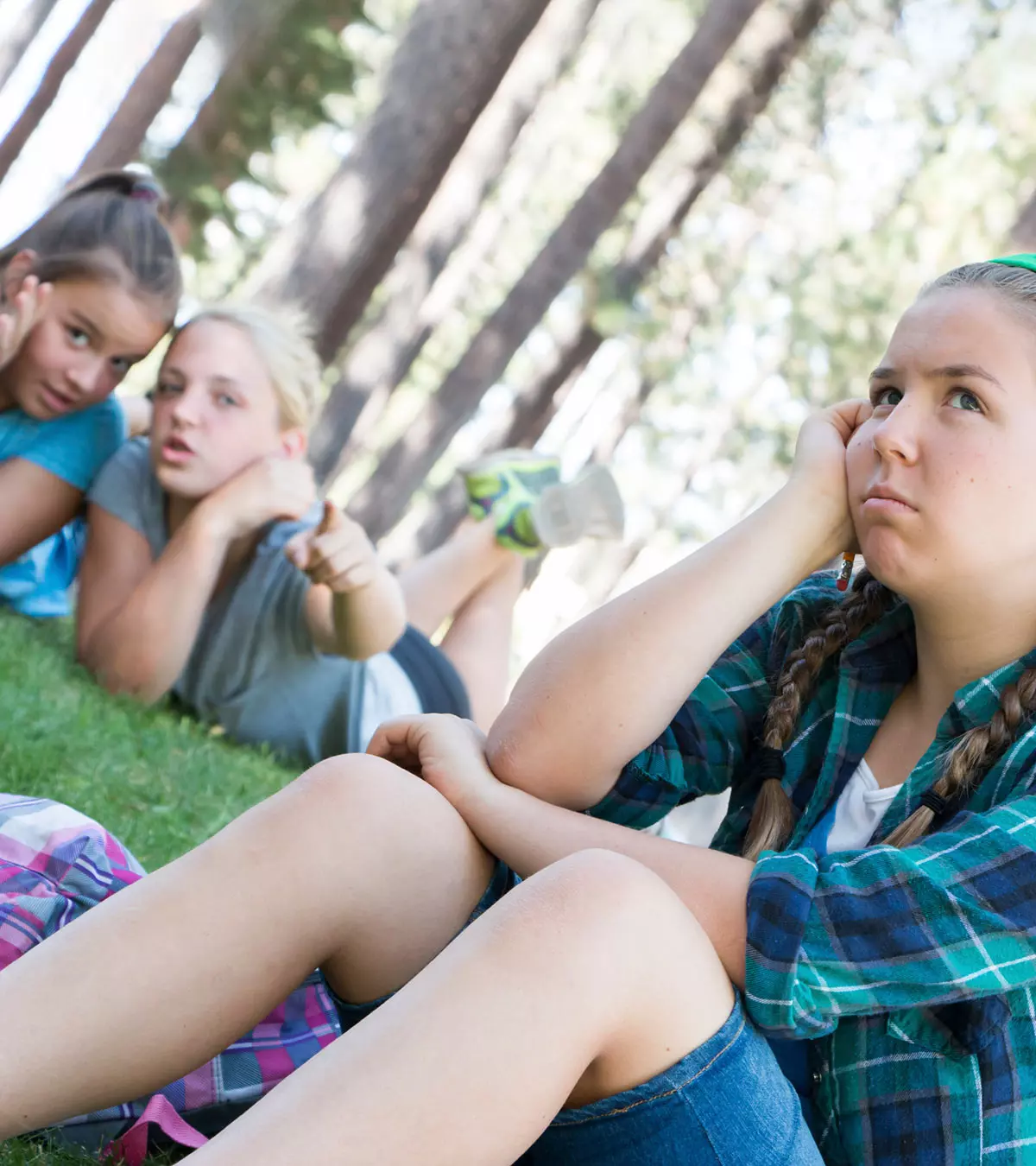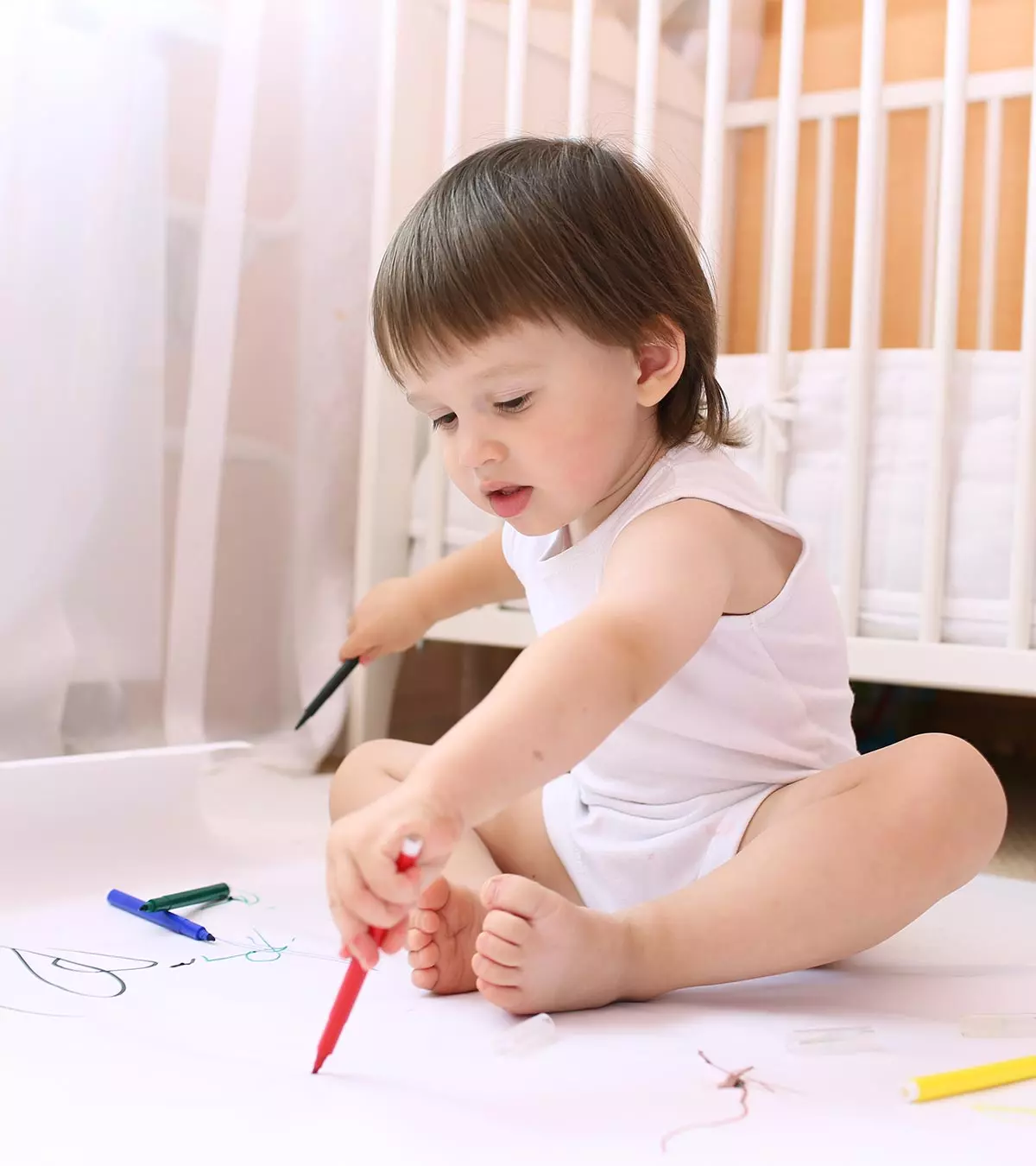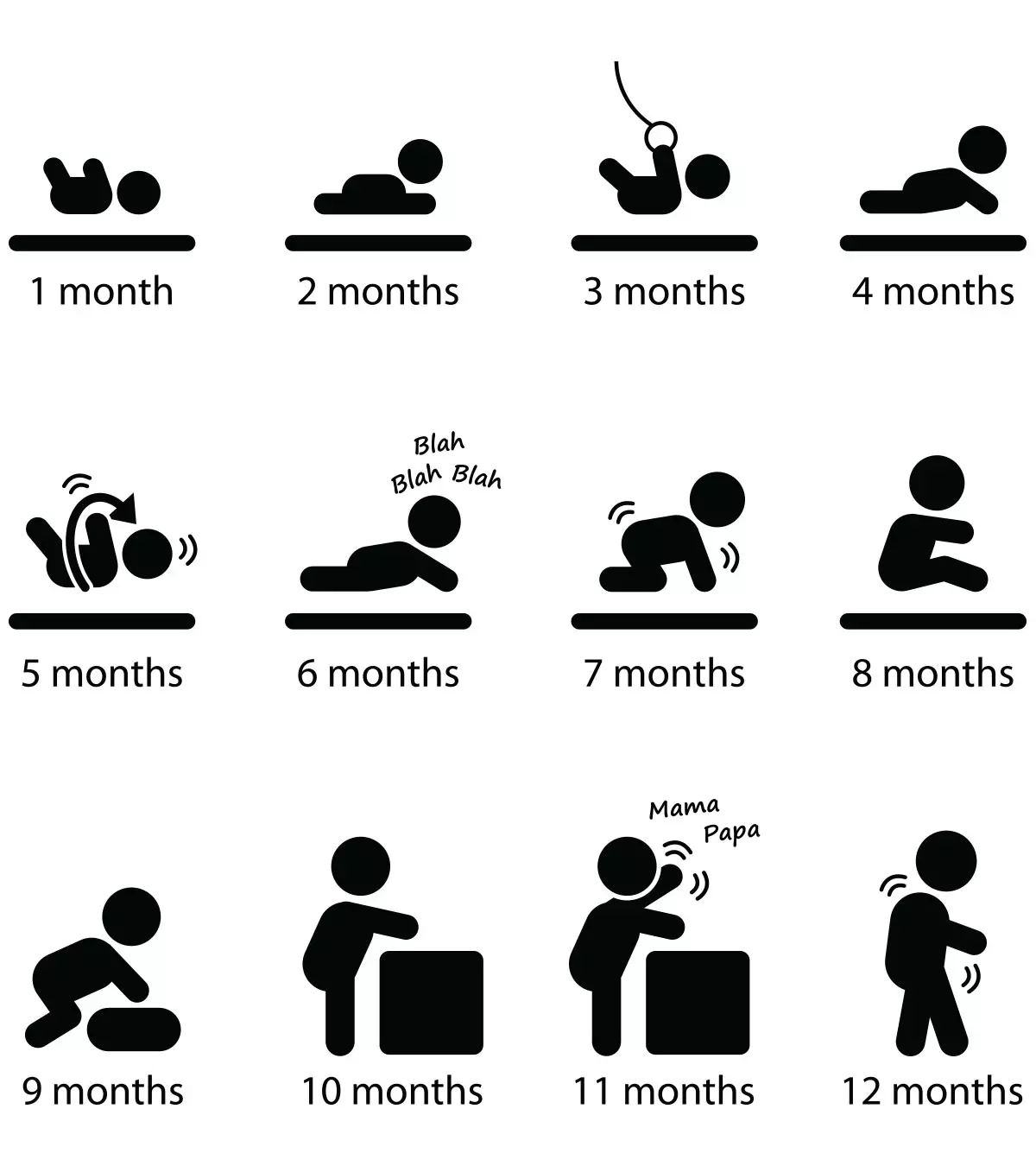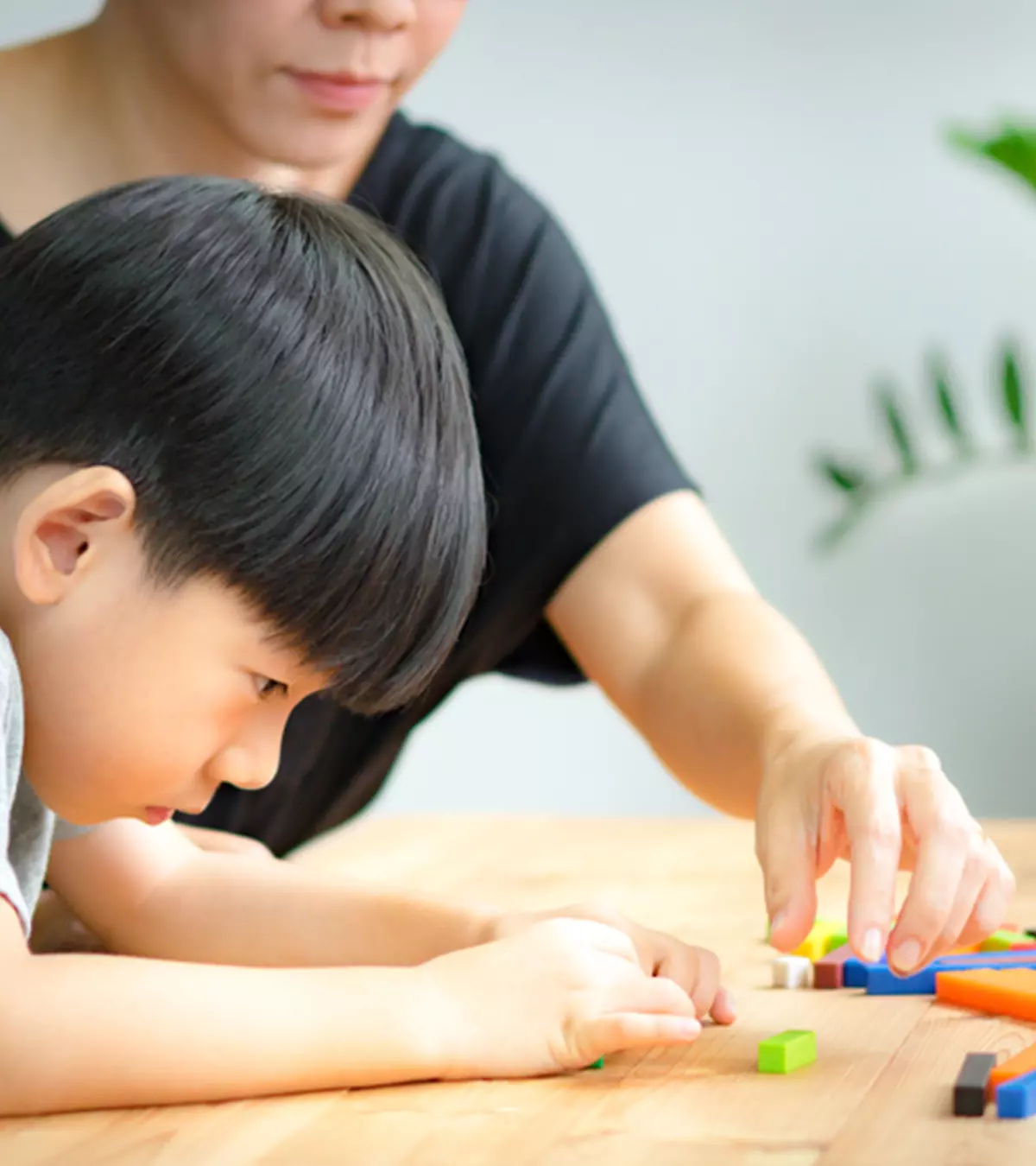
Image: Shutterstock
Children receive numerous opportunities to learn about the world as they get older. However, they also regularly encounter problems, whether it is peer pressure, difficult arithmetic calculations, or disagreements with their peers. The benefits of problem-solving skills for kids such as enhanced creativity and critical thinking can help them deal with such situations. They will learn to find practical solutions independently without relying on an adult. Further, when they encounter difficulties, they will be more confident in their ability to employ their problem-solving skills and develop innovative solutions on their own. Read this post to know the importance of problem-solving abilities for children, how to inculcate this skill in them, and for some exercises to help them develop this essential skill.

Key Pointers
- Problem-solving skills teach kids to think out of the box and independently cope with life’s challenges.
- Guiding them to acknowledge the problem and letting them solve the problem themselves could teach problem-solving skills in children.
- Puzzles, scavenger hunts, mazes, and many more fun and engaging activities to hone your child’s problem-solving skills as you scroll down.
Importance Of Problem-Solving Skills For Kids
Problem-solving benefits children in numerous ways. It helps them (1) (2)
- Cope with challenges in everyday life: Problem-solving skills help children navigate everyday challenges by teaching them how to analyze situations, think critically, and find practical solutions to problems. Whether it is about resolving conflicts, making decisions, or handling setbacks, these skills help them build resilience, independence, and confidence in facing life’s uncertainties.
- Develop emotional intelligence: Problem-solving skills help develop children’s emotional intelligence by teaching them how to manage frustration, handle conflicts, stay calm under pressure, and think critically about their emotions.
- Think outside the box: Problem-solving skills encourage thinking outside the box by pushing kids to explore creative solutions beyond the obvious. They help children analyze situations from different angles and experiment with new ideas.
- Improve academic performance: They help enhance children’s critical thinking, logical reasoning, and decision-making skills, which are essential for analyzing questions and finding effective solutions and tackling complex subjects.
 Did you know?
Did you know?How To Inculcate Problem-Solving Skills In Children
Problem-solving helps develop teamwork, resilience, adaptability, communication, and social skills. Here are a few ways to encourage your child to improve their problem-solving skills.
1. Test it out
Whenever your child encounters a problem, ask them to acknowledge it and embrace the challenge. It will help hone their analytical and reasoning skills. If the outcome is ineffective, they can try different brainstorming approaches to find a practical and effective solution. It will nudge your child’s creativity and encourage them to look at problems from different angles.
2. Ask for advice
Sometimes, you may struggle to make decisions in your everyday life. For instance, you might struggle to decide what to cook for dinner or what to wear to the movies. Ask your children to help you make these simple decisions. When you ask them for their advice, it teaches them that they’re not the only ones who face problems. When you value their ideas, it will give them the confidence to solve problems independently. Besides, it will churn their thinking and analyzing skills, which will eventually help them in decision making.
3. Make them take a deep breath
One of the first steps to effective problem solving is remaining calm. Even with youngsters, when their emotions go out of hand, it’s difficult to look at things rationally, and the tendency to make impulsive decisions becomes higher. It’s important to teach your child to take deep breaths every time they feel they’re losing control of their emotions. Once they’re calm, they can assess the situation better.
4. Help them verbalize the problem
It would help your child if they verbally express how they feel and what they’re struggling with after calming down. Even the biggest challenges for kids seem easier once they are verbalized. Verbalizing helps them gain perspective and makes it easier for them to come up with potential solutions.
 Point to consider
Point to consider5. Don’t provide “the answer”
While it’s difficult to watch your children struggle with an issue, do not give them the answer outright. Instead, give them hints to help them solve the problem independently. This way, they can learn to come up with creative solutions independently, using their logic and creativity.
6. Lead by example
Children are like sponges and pick up things very quickly. So, when you confront a problem and come up with an effective solution, they’ll notice how you address issues and try to emulate you.
7. Allow natural consequences to unfold
Sometimes, letting the problem run its course is the best way to deal with it. So, when your child is faced with a problem, let them be. Let’s suppose your child spent all their weekly allowance in a day or two; let them go the entire week without allowance. This will set them up to make better choices in the future.
15 Problem-Solving Activities For Kids
There’s no better way to learn than through play. The following activities are quite fun and require children to display their problem-solving skills.
1. Puzzles
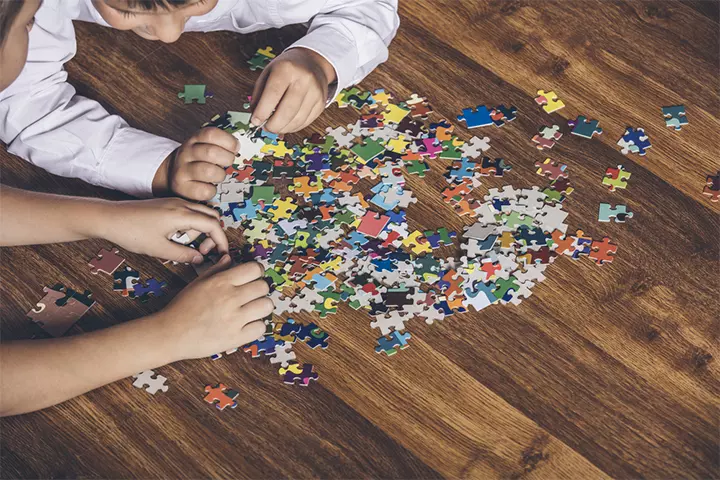
One of the best problem-solving activities for children is puzzles. They come in various difficulty levels. Based on your child’s age, you can pick the appropriate one. Give them a puzzle, and they will learn to analyze the problem/question, find different ways of solving it, and arrive at the solution.
Additionally, the puzzle activity will help improve their critical-thinking skills, gross motor skills, and hand-eye coordination (3).
 Point to consider
Point to consider2. Scavenger hunt
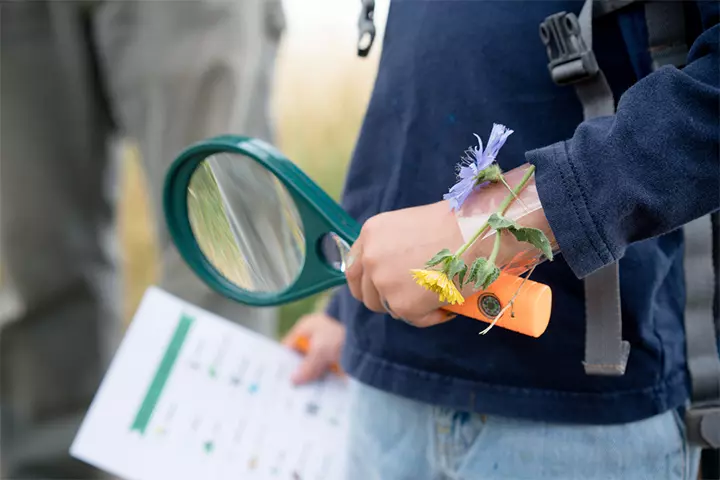
One of the educational activities that every parent should introduce to their children is scavenger hunt. It is an inexpensive, easy, fun activity that can be done both indoors and outdoors and requires nothing more than the items you already have at home. The activity allows children to think outside the box. Without being aware, they’re learning problem-solving in a fun way, using their exploration skills (4).
Korbalagae, a former preschool through grade one teacher, shares an exciting idea for a problem-solving scavenger hunt. She narrates, “One of my favorite low prep lessons was the gingerbread man. I mostly needed buy-in from my colleagues and some cookie dough. Once we had read the book, I would have my students make gingerbread cookies, but as in the stories, ours would go missing.
“Our head cook, Mr Patrice, came to give us some terrible news that our cookies had disappeared when he went to look in the oven. This started our problem-solving. We had to figure out where our cookies had gone and how to get them back… We then had to come up with a plan of how to find them and where to look… My students had a chance to solve a problem. We had different theories of how our cookies went missing and where they could be, and for each idea, we examined it as a group. What was always wonderful to see was how one student’s idea would be picked up by another student and expanded upon (i).”
3. Storybooks

Reading offers a plethora of benefits. One of them is problem-solving. When children read stories, they come across various characters and the roles they play. Most often, children get attached to these characters. So, when they come across a problem, ask them how their favorite character would have solved it. Encourage them to come up with a variety of solutions and discuss the possible outcomes of each.
4. Crafts

Engaging them in arts and crafts is another excellent way to teach children problem-solving skills (5). Give your child a variety of materials lying around the house and let them unleash their imagination. Let them come up with all sorts of exciting creations or repair broken toys or gadgets. Allow them to work independently, and guide them only when they are out of ideas.
5. Open-ended questions
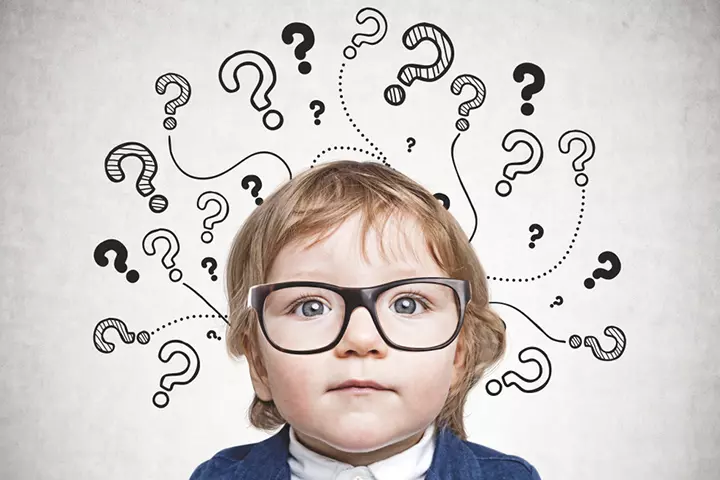
Asking open-ended questions is an excellent way to improve your child’s ability to think creatively and critically and improve their problem-solving skills (6). With these questions, there’s no right or wrong answer, and the answer goes beyond a simple ‘no’ or ‘yes.’ They have to put some thought into their answers. Here are a few questions you can ask after each session.
- What was difficult? What was easy?
- What did you learn?
- What do you think will happen next?
- How did you arrive at the solution?
- What would you do differently the next time?
6. Maze

Mazes are fun and safe for all age groups. When they work on mazes, it makes them think. The activity also improves their motor skills, observational skills, sense of direction, and problem-solving skills. Think beyond book mazes – you can find many maze games on the web. With practice, they’ll get better at finding their way out. Eventually, you can give them more complex mazes to solve, which help enhance their problem resolution skills.
7. Mini treasure hunt
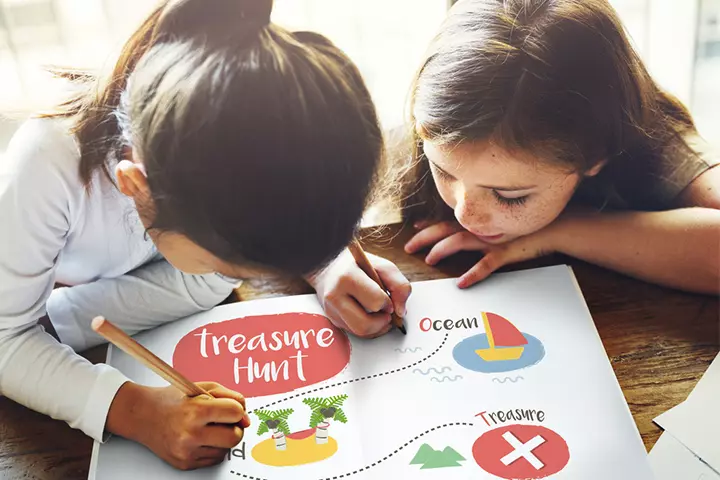
Treasure hunt is one game that can get the entire family involved. You can keep their minds at work, especially if they know they’re going to win something in the end. Give them clues that encourage them to think outside the box and use their problem analysis skills to find the treasure in the end. Here are a few hints you could use to let them find the treasure:
- My job is to put an end to your sleep. I do so with a beep, buzz, or music. (Ans: alarm clock)
- I don’t have a face or arms, but I have hands that move at a steady pace. (Ans: Clock)
- I’m filled with soft feathers, and it’s quite impossible for you to sleep without me. (Ans: Pillow/blanket)
- Use me to clean your car in a jiffy or to give plants a drink. (Ans: Water hose)
8. Building with toys
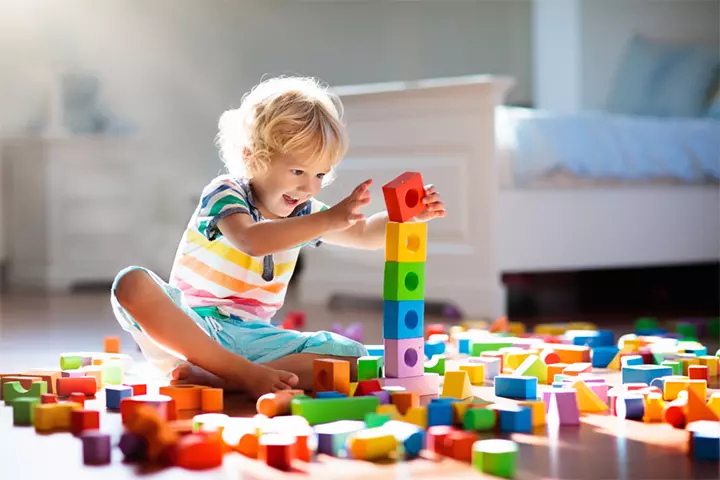
Give your children LEGO blocks, wooden blocks, engineering blocks, etc., and make them build whatever they wish. Building with toys provides ample experimentation opportunities that require children to think and develop creative solutions to ensure a functional design. You can once, in a way, ask them to build something challenging, such as a creature with three arms or two towers with a joining bridge. Watch them rack their brains as they try to come up with a structure.
9. Wool web
Give the children a multi-colored yarn and ask them to stand in a circle. One person loops the ball of yarn across a finger and passes it to another person. Once every person gets a chance to hold the ball and loop the yarn across their finger, a web would be created.
Now, blindfold one member and ask them to follow the verbal instructions of the others to unwind the web. This group activity involves teamwork, focus, patience, coordination, concentration, and problem-solving skills to figure a way out.
10. The human knot
It is a simple game that’s extremely fun. In this game, you need a group of children. Make the children form a circle and raise their hands. Start with one player, who has to use their right hand to hold onto a player’s hand from across the circle and their left hand onto someone else’s hand. Check if everyone has held both hands with different players. Now, without breaking the circle, they must untangle themselves. The challenge is complete once everyone’s hands are free and they are back in the circle.
11. Impromptu skits
Divide the players into teams. Write down different scenarios, such as dealing with bullying in school or resolving a fight between siblings, on pieces of paper, fold them, and place them in a bowl. Each team/player picks a chit and acts out the scenario. You can give them a time limit to prepare. Such impromptu activities help children identify a problem, formulate a solution, and execute it.
12. Group drawing
Another excellent team-building activity for sharpening children’s problem-solving and communication skills is group drawing. Divide children into teams of three. Each of the three players in the team has a role to play.
One person is the drawer, who takes directions from the instructor to attempt to create a design. They should stand with their back to the instructor and viewer and must not talk.
Next is the instructor. The instructor is the one who gives out verbal instructions as to how the drawer must draw a particular design. It is this feature of the game that makes it one of the best leadership activities for kids across age groups.
The viewer looks at the design. But, they’re not allowed to talk and can only communicate with the instructor via gestures.
You have a winner when the viewer is satisfied with the drawer’s picture. You can let the children take turns playing different roles.
13. Clue me in
Clue me in is a fun detective game that encourages cognitive development in children, along with critical thinking and problem-solving. Start by selecting five to six target answers, such as a public figure, animal, historical event, social trend, or profession. Now, collect five to ten items associated with each target answer. They can be pictures from the Internet too. Place them in different bags.
Now decide how many clues a child can pick before making a guess. If it’s two, let the child pick up two clues from a bag and make their first guess. See who’s able to answer the quickest.
14. Survivor scenarios
Here’s another game that doesn’t require any items. In this game, you have to create pretend-play scenarios for children, who have to analyze and think out of the box to solve. For instance, give them this scenario, “You’re stuck on an island, and you know help will not come for two days. So how will you create a shelter for yourself with items around you?” Thinking about solutions to such situations will take a child’s innovation and imagination skills to the next level.
15. Moral dilemma
Children often find themselves in a dilemma. This simple game, without their knowledge, will help them cope with such scenarios. On pieces of paper, write down different dilemmas, such as ‘The cashier gave me $1 extra in change; what should I do?’ or ‘I saw my friend bullying someone at school. Should I stop them or let them be?’ Then fold it up and place it in a bowl. Get each child to pick one piece of paper, read it aloud, and come up with creative solutions on the spot to handle the situation. This fun activity will help children in problem identification and resolution, using contemplation.
16. Tic-tac-toe
Tic-tac-toe is one of the popular problem-solving activities for kids. It helps children learn patterns and symbols while boosting their problem-solving skills by building strategic and logical thinking. Draw a 3×3 grid and engage two children as players (one player uses X and the other O). Let each child take turns placing X and O in an empty square. The target is to get three consecutive Xs or Os in a horizontal, vertical, or diagonal pattern, and the first player to do so wins.
17. Board games
Board games are a great way to help children learn strategic thinking and foresight. These games enhance memory and cognitive skills by strengthening key brain areas and leads to improved IQ, better problem-solving and language skills, better information retention, and reduction in stress levels (7). There are several age-appropriate board games to choose from. Popular ones include Ludo, Snakes and Ladders, Monopoly, Chess, Checkers and Scrabble. The number of players will vary based on the instructions in the game.
Frequently Asked Questions
1. At what age do children begin problem-solving?
Problem-solving is one of the essential life skills for kids that may learn at different ages. Generally, children are believed to acquire the basics of problem-solving by age three. However, it is not refined since it is intervened by a short attention span and difficulty understanding the problems independently. Their problem-solving skills develop as they grow up (8).
2. What types of problem-solving activities are suited for different age groups?
For younger children (ages 3-5), opt for simple, engaging puzzles and games that align with their shorter attention spans. For older children (ages 6-10), introduce more complex scenarios and encourage discussions that challenge their problem-solving abilities.
3. How can I encourage problem-solving skills during daily activities?
Involve your children in decision-making processes, ask them open-ended questions, and allow them to face and navigate challenges independently to encourage problem-solving skills during daily activities.
4. What are three problem-solving strategies?
The three common problem-solving strategies are (9):
- Trial and error: Trying different ways to solve a problem until it is resolved
- Algorithm: Following a step-by-step formula to solve the problem
- Heuristic: Following a problem-solving framework such as breaking it into steps
5. What are the most common mistakes children make when solving problems?
One common mistake is children rushing to solve the problem out of excitement without understanding the problem. They may not try to comprehend the wording of a problem, which prevents them from identifying the facts. The urge to complete one question quickly and move to the next also makes them give the wrong answers.
6. What are the potential challenges of teaching problem-solving to kids?
Some of the challenges that educators face when teaching problem-solving is the developing cognitive skills in children that may prevent them from understanding specific concepts. The absence of background knowledge to solve a particular problem also hinders the process. In addition, children tend to have limited attention affecting their focus on solving a complex problem. Finally, a lack of appropriate materials and resources can also challenge teaching problem-solving.
Problems are a part of life, and the sooner children learn to tackle them, the better. Problem-solving for kids is an important life skill that helps them cope with everyday difficulties, challenges them to think differently, and learn more critical thinking skills. You may teach problem-solving skills to your children by encouraging them to share their problems, driving them to find their answers, or setting a good example. You can also involve them in problem-solving activities, such as puzzles, scavenger hunts, and mazes. Your focused efforts will help your children grow independent and confident in their problem-structuring skills.
Infographic: “IDEALS” – A Method Of Problem Solving
One of the critical life skills a child should learn early is problem-solving abilities. IDEALS is a strategy to assess and promote problem-solving skills and can be helpful to children. Read more about this method in the infographic below.
Some thing wrong with infographic shortcode. please verify shortcode syntax
Illustration: Fun Activities To Teach Problem Solving To Kids
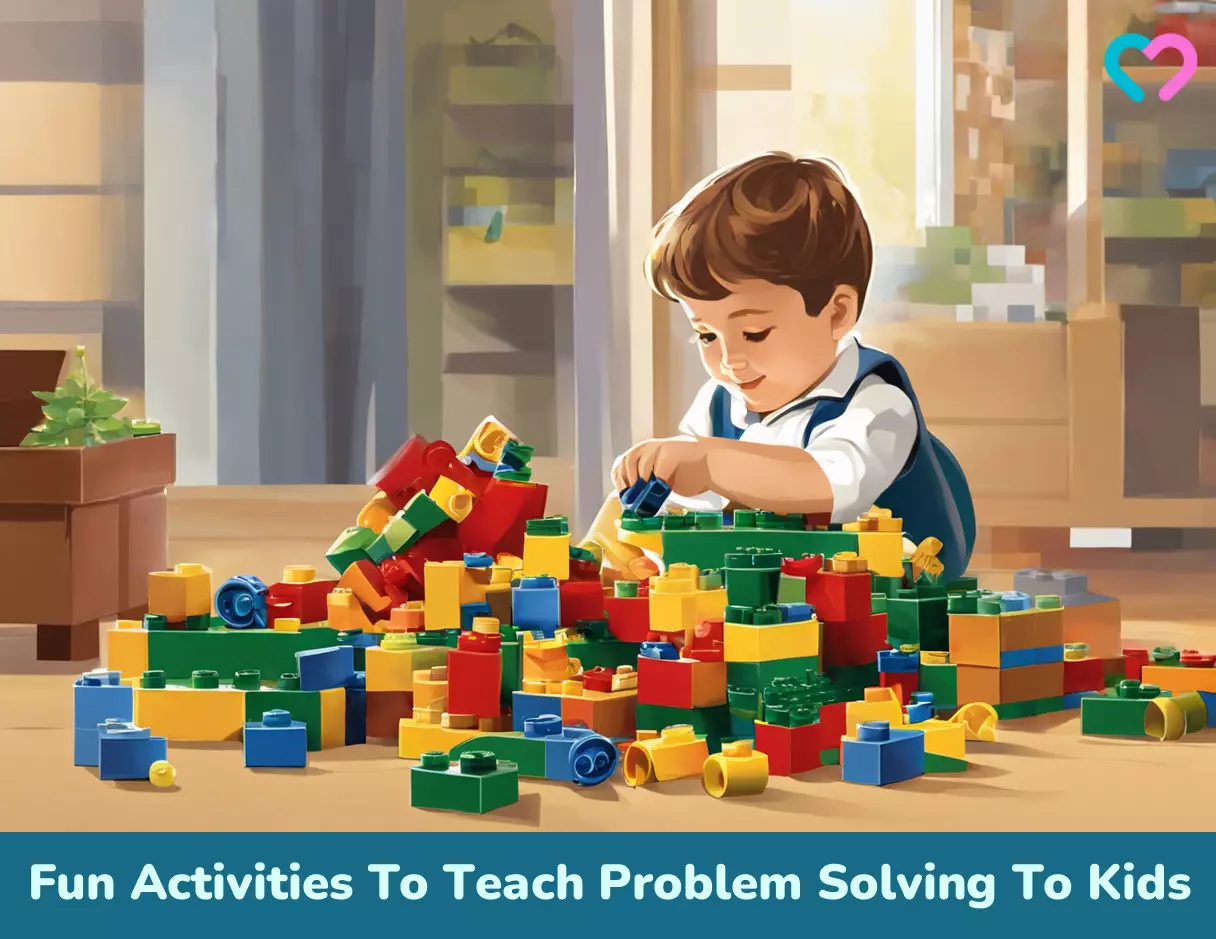
Image: Stable Diffusion/MomJunction Design Team
Personal Experience: Source
MomJunction articles include first-hand experiences to provide you with better insights through real-life narratives. Here are the sources of personal accounts referenced in this article.
i. Simple problem solving activities | how to teach problem solving skills in kindergarten;https://www.youtube.com/watch?v=Auo-bxKk3gc
References
- Why is ProblemSolving Important in Child Development?
https://www.marlborough.org/news/~board/health-and-wellness/post/why-is-problem-solving-important-in-child-development - Why Problem Solving is Important to Child Development?
https://inspiremuncie.org/why-problem-solving-is-important-to-child-development/ - Five Things Children Gain From Puzzle Play.
https://illinoisearlylearning.org/blogs/growing/puzzle-play/ - Benefits of Scavenger Hunts.
https://educationaladvancement.org/blog-benefits-scavenger-hunts/ - The Importance of Arts and Crafts for Early Childhood Development.
https://www.cmosc.org/benefits-of-art-during-early-childhood/ - The Power of Open-Ended Questions.
https://mcm.org/the-power-of-open-ended-questions/ - Benefits of Board Games.
https://www.rwjbh.org/documents/csh/Benefits-of-Board-Games.pdf - Academic and Functional Literacy Outcome Component 2: Demonstrates Competence in Problem Solving.
https://cales.arizona.edu/sfcs/cyfernet/nowg/academic_component2.html - Problem Solving.
https://opentext.wsu.edu/psych105/chapter/7-4-problem-solving/
Community Experiences
Join the conversation and become a part of our nurturing community! Share your stories, experiences, and insights to connect with fellow parents.
Read full bio of Dr. Maymunah Yusuf Kadiri
Read full bio of Advaitaa Ravi
Read full bio of Harshita Makvana
Read full bio of Nisha Bharatan








